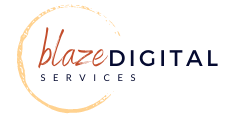Digital marketing refers to the use of digital channels, such as search engines, social media, email, and websites, to promote products or services and engage with potential customers. It involves a variety of tactics, including search engine optimization (SEO), content marketing, social media marketing, email marketing, pay-per-click (PPC) advertising, and more. The goal of digital marketing is to increase brand awareness, drive website traffic, generate leads, and ultimately, boost sales and revenue.
What’s the difference between digital marketing and regular marketing?
The main difference between regular marketing and digital marketing lies in the channels and methods used to reach and engage with target audiences.
Traditional or “regular” marketing typically uses offline channels such as television, radio, print, and outdoor advertising to reach potential customers.
On the other hand, digital marketing uses online channels such as search engines, social media, email, and websites to promote products or services and engage with potential customers. It also allows for more targeted and measurable campaigns, as data can be tracked and analyzed to optimize marketing strategies in real-time.
This makes digital marketing a more cost-effective and efficient way to reach and engage with potential customers, particularly for small business owners, nonprofits, and entrepreneurs who may be operating with limited marketing budgets.
How does digital marketing work?
Digital marketing works by using various online channels and tactics to promote products or services, build brand awareness, and engage with potential customers. This can include search engine optimization (SEO), content marketing, social media marketing, email marketing, pay-per-click (PPC) advertising, and more.
The process typically involves researching and defining a target audience, creating and distributing content that is relevant and engaging to that audience, and tracking and analyzing data to optimize campaigns and strategies over time. By leveraging digital channels, businesses can reach a wider audience, improve their online presence, and ultimately drive more traffic, leads, and sales.
Here is a visual representation:

Small business owners, nonprofit organizations, and start-up companies should consider investing in this type of marketing because it provides an efficient and cost-effective way to reach and engage with potential customers. With more and more consumers relying on digital channels to make purchasing decisions, having a strong online presence has become essential for success.
Are you ready to increase brand awareness, website traffic, and generate more leads for your organization? Contact us now to get started.
